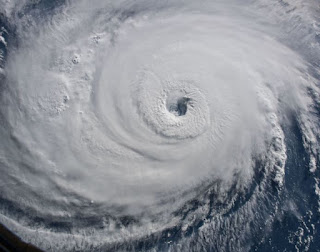Business Owners Hurricane Guide
By Diane Tait
 |
| Image courtesy flickr |
While there are no named storms currently churning
through the Atlantic, that doesn’t mean we Floridians are out of the woods yet,
since hurricane season isn’t officially over until November 30. So far this year, there has only been one named
Atlantic storm which came and went without incident in late May. That being said, NOAA has predicted a total
of thirteen named storms, including five hurricanes for 2019. The problem is, by the time the public hears
about the approach of a named storm, it’s almost too late to do much about
it. With that in mind, I thought I’d
take a few moments to jot down what business owners need to know when a
hurricane heads this way.
1. Blow the biz down – If you’ll remember the newsreel footage of the
crowds of people cramming into the Superdome when Katrina hit New Orleans, you’ll
realize that the time to take action is before the wind is bending the palm
trees down. While most Floridians know what to do to
protect their homes when a hurricane nears, the same can’t always be said of
business owners. In the first place, if
your business is in a commercial center, like a strip mall or office building, chances
are it has a lot more glass than the average home. Should a piece of windblown debris strike
your business’ window and crack or shatter the glass the odds are you’ll come
back to a flooded mess.
 |
| Image courtesy flickr |
3. Shoot a video starring your office. – One of the biggest problems for many business
owners is being able to document the condition of belongings that were damaged
or destroyed by a storm. If you want to
get top dollar for your office equipment and furnishings, I recommend you do a
walkthrough of your business with your smartphone. By shooting a narrated video, you will be
able to document the condition of your office equipment before the storm. This way if you come back to the scene of a
disaster, you won’t be hard pressed to prove the condition of items prior to
the storm.
 |
| Image courtesy Pexels |
4. Document check – Since storms and paper do not mix, make sure that
you remove all vital documents and insurance policies from the premises. The last thing you want to find after the
storm is over is that every piece of paper in your business is either unreadable
or it’s gone with the wind. Also make
sure you leave your landlord with your business card so he or she can call you
when the storm has passed to tell you the condition of the building.
5. The devil’s in the details. – Aside from documenting your possessions and
policing the parking lot, there are a few more housekeeping chores you should
perform before you bug out. Since flying
debris makes a dandy missile, make sure the dumpster is either emptied or the
lid tied down. If you or neighboring
businesses have any outdoor furniture or signage, bring as much of it inside as
possible. Walk around the building to
make sure that nothing is likely to come loose in the wind. Turn off the HVAC system and the power to
your office. Last but not least, if you
have sandbags or a flood barrier, deploy them as soon as you lock up on the way
to your car.
6. Mustering the troops – If
you have employees, no doubt they’ll be more concerned with their family than
with your business. At least they will
until the storm has passed and power has been restored to the town. Instead of relying on an “every man for himself”
policy when a named storm bears down on you, take the time to brief your
employees on what they need to do once the worst is over. This way they’ll have some idea of when to
report after the storm has passed.
7. What to do after the storm – Once the rain and wind
has died down and it’s safe to travel the streets, you need to check to see how
much damage was done to your business.
If you made it through the storm without a scratch, good for you. On the other hand, if your business was
damaged by the storm, you need to not only document the damage, you may have to
prove how it was produced. After
Hurricane Sandy hit the northeast, fully half of the $20 billion in claims were
denied. The reason so many claims were
turned down was largely due to the distinction of wind damage versus flood
damage. Only a fraction of those whose
property was damaged or destroyed by Sandy had flood coverage. These home and business owners learned to
their chagrin that just because you aren’t in a designated flood zone doesn’t
mean that your home or business can’t get flooded. What’s even worse is that most of the affected
businesses could have paid as little as $700 per year to insure their business
against the possibility of flood. Since
north Florida regularly get hit by torrential rain and the occasional hurricane,
I urge all area business owners to discuss flood coverage with their agents.
Diane Tait
owns and operates A&B Insurance. To find out more about how you can save
money on home owner’s insurance, go to her site or fill out the form at right.


It's that time of year again. Don't wait for the last minute to prepare for a hurricane.
ReplyDeleteWe are near the middle of the hurricane season- get ready and this guide can help. It helped me.
ReplyDelete